Study shows crucial need to study changing environmental conditions and possible fishing challenges
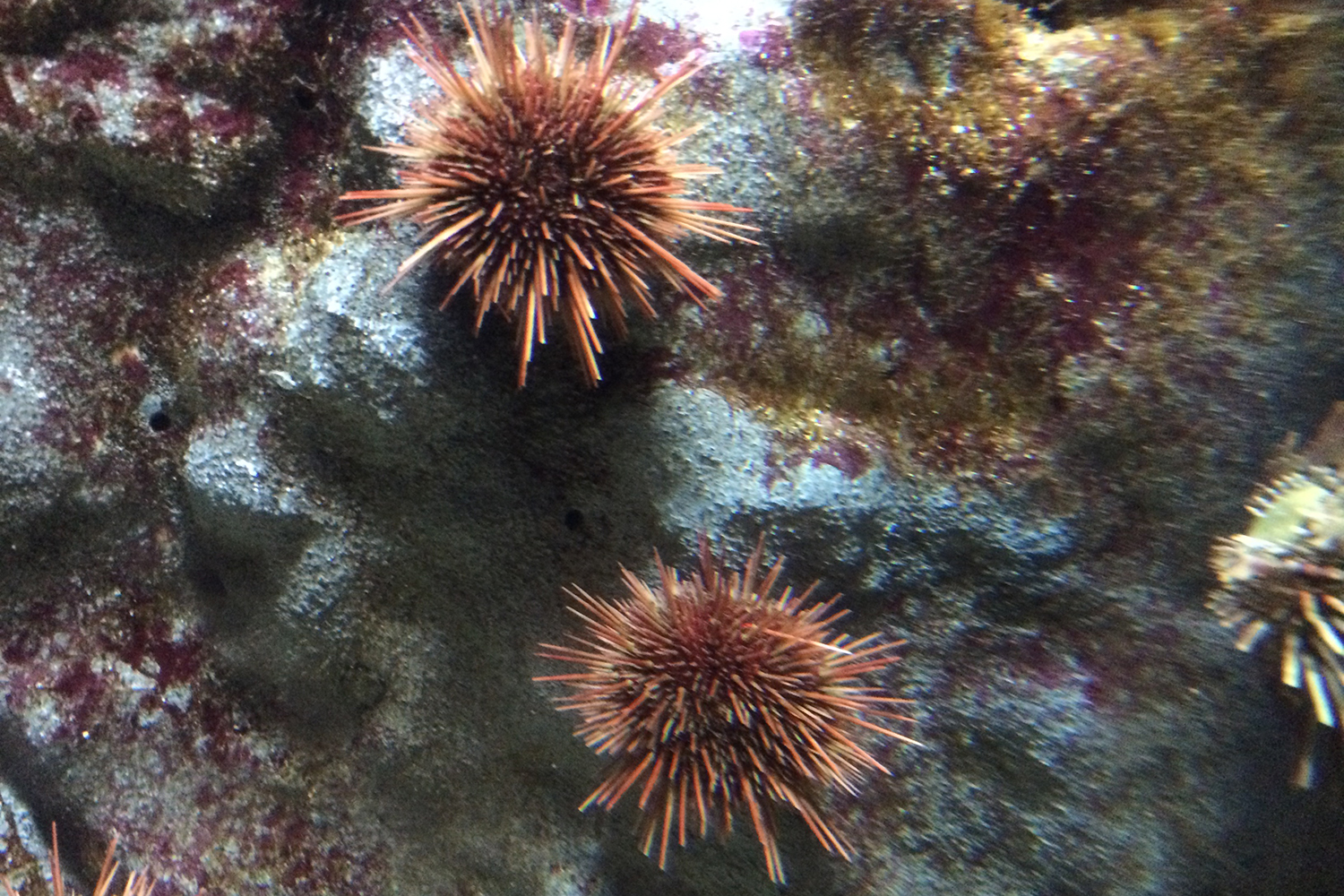
In the actual context of global changes, ocean warming and acidification are both closely related to increased atmospheric carbon dioxide concentration and are expected to deeply impact biological communities through generalized effects on the entire oceanic system. Indeed, environmental changes may challenge the growth and stability of various marine productions due to the emerging consequences associated with ocean warming and acidification. Among commercial marine species, sea urchins undergo a variety of physiological, transcriptomic and immunological changes as a result of the conditions imposed by ocean warming and acidification, raising questions about the future management of several populations.
In addition to their importance in terms of ecological services, sea urchins are widely exploited for commercial purposes, supporting a growing market of considerable value. Although recent studies emphasize the growing importance of echinoid farming within integrated multitrophic aquaculture (IMTA) systems, sea urchin fisheries account for more than 99.9 percent of total sold per year, with aquaculture providing the remainder.
Today, most of such species’ main exploitation areas are expected to dramatically change in the near future as a consequence of global changes, redefining the regional abundance and availability of species for commercial fishing. As a result, it is critical to anticipate new opportunities and challenges in marine production systems so that involved industries can implement viable and long-term adaptation strategies. Aquaculture and fisheries can clearly benefit from defining the tolerance limits of target species when confronted with global change consequences. Specific investments and stressor mitigation policy can then be deployed to limit the negative effects imposed by ocean warming and acidification.
This article – synthesized from the original publication (Uboldi, T. et al. 2023. How ocean warming and acidification affect the life cycle of six worldwide commercialized sea urchin species: A review. Aquaculture, Fish and Fisheries 3(3):219-236) – presents the results of a review of the scientific literature focusing on the impacts of OW&A on several life stages (i.e., planktonic and benthic post-metamorphic stages) of the most economically relevant species of sea urchins globally.
Study setup
This study is based on experimental studies and field observations and defines a series of physiological, immunological and transcriptomic alterations in different populations of commercial sea urchins facing expected environmental conditions. It cross-references 79 published studies concerning both sea urchin tolerance limits and environmental alterations to assess the vulnerability of distinct sea urchin populations in different geographical areas. It also
establishes the potential vulnerability of populations exposed to ocean warming and acidification conditions that fall behind their limit of tolerance in order to inform local fishing industries of the incoming challenges enforced by the current global changes.
The information used is the estimated physiological limits of six species of sea urchins: the Chilean sea urchin (Loxechinus albus), the red sea urchin (Mesocentrotus franciscanus), the purple sea urchin (Paracentrotus lividus), the green sea urchin (Strongylocentrotus droebachiensis), the sea urchin (S. intermedius), and the purple sea urchin (S. purpuratus) to define the vulnerability (or resilience) of their populations facing ocean warming and acidification.
Because environmental mutations occur at different rates depending on location, the review also includes 18 studies considering small-scale spatial events in order to precisely assess the regional environmental alterations imposed by ocean warming and acidification. In particular, these studies examine the local physical-chemical changes that take place on different coastal systems, predicting thermal and pH shifts that will affect a number of areas where the considered species are typically found.
Results and discussion
Ongoing global changes are modifying the fisheries distribution and the productivity of many aquaculture operations. Understanding the way in which warming and acidification may affect the life cycle of marine organisms is essential to assess the future of marine ecosystems and the services they provide. Nevertheless, other environmental changes must also be considered in order to provide a more complete overview of coming changes, like hypoxia, freshwater inputs and primary production turnover.
Within a specific range, ocean warming (OW) enhances the development of various sea urchins’ life stages, with inhibitory responses only after the tolerance threshold is exceeded. Rising temperatures, for example, improve body size and gonad index of settled forms. However, excessive warming alters basic physiological processes, impairing juvenile development and finally increasing mortality in several populations. Additionally, temperature strongly influences larval settlement, which regulates population spread. Fast-growing embryos and larvae reduce spread-specific capacity in the environment, limiting dispersal and reducing connectivity among populations.
Among the present studies, the ocean acidification (OA) threshold of 7.7 pH is frequently associated with several development issues in both planktonic and benthic stages of several species. Such findings are consistent with the work of researchers that established a general tolerance threshold in echinoderms between 7.60 and 7.75, above which impaired physiological responses appear. Water acidification has a significant impact on the body development of both larval and juvenile forms, altering their morphology and metabolism, with subsequent severe consequences on individual fitness. Nonetheless, the OA threshold of sea urchins is habitat dependent, indicating that acclimation and adaptation processes can shape the individual’s sensitivity to lower pH at local scale. Furthermore, OA vulnerability appears to be strongly influenced by carryover effects related to the living environment of parents.
Considered together, ocean warming and acidification operate in either synergistically or antagonistically ways at different life stages of echinoids. In some cases, warming mitigates the effect of acidification on larvae and juveniles, but they also act synergistically generating damaging outcomes. Warming, in particular, mitigates the negative effects of acidification when temperatures remain within the tolerance species range. Conversely, when warming exceeds a specific threshold, the negative effects of both stressors cumulate, resulting in far-reaching consequences. Because both factors act concurrently in the marine environment, future research must examine the impact of concurrent factors.
In this review, we considered different populations to assess their adaptation potential to changing environmental conditions. Such ability results from genetic adaptation to living in habitats where organisms routinely experience temperature and/or acidification variations. In particular, populations exposed to a broad range of environmental conditions are good candidates to provide insights about transgenerational plasticity. In general, areas naturally subjected to altered physical-chemical conditions (e.g., upwelling zones, carbon dioxide vents, intertidal plan) demonstrate the possibility of phenotypic adjustment and/or beneficial genetic selection, revealing complex plasticity–adaptation.
As reported, sea urchins from populations enduring extreme environmental conditions appear more resilient to the tested laboratory conditions. Researchers have reported that parental conditioning over a few generations has limited benefits on offspring’s stress resilience in the face of global change consequences. Nonetheless, over longer periods (i.e., with sufficient time to adapt), population’s genetic diversity may constitute a foundation for selecting features most adapted to new altered conditions, potentially increasing the resilience of some populations facing ocean warming and acidification.
Study: Increased rainfall from climate change threatens UK sea urchins
From a management perspective, several methodologies have been provided to minimize the effects of ocean warming and acidification. According to the adaptive plasticity concept, selective breeding is a technique used in aquaculture to optimize production, overcome reduction in growth performance and thus can be very useful to recover from diseases and other stressors. Nevertheless, in the presence of multiple stressors, species at the limit of their tolerance range should have reduced survival and fitness. In aquaculture, the IMTA is defined as a sustainable and economically rewarding system as well as more resilient to global change. For instance, farmed seaweed and macrophytes should constitute valuable cultures to provide localized OA mitigation by producing oxygen, sequestering carbon dioxide and increasing pH.
Furthermore, local food availability is also a major factor in determining the magnitude of stressors as a great food supply can dampen the negative impacts of water warming and/or acidification on particular species. It should be pointed out that species exhibiting sensitive life stages might be farmed in appropriate land-based basins under monitored conditions and subsequently moved onto outdoor farming. This strategy could make it possible to protect organisms from exceptional stress events (i.e., marine heatwaves or upwelling events).
In conclusion, the direct consequences of ocean warming and acidification result in substantial changes in all life stages of various echinoid populations, from eggs to adults. The reported findings help in defining the highly variable bearing capacity of populations in order to develop valid predictive models about fishery trends. As reported by several observations, the distribution limits of many sea urchins’ populations are changing, with important consequences for ecological and economic systems. Assessments that identify alternative ways to shift fishery emphasis from more vulnerable to resilient species will increasingly play a crucial role in maintaining productivity in local industries.
Understanding and evaluating the effects of stressors on the organisms’ life cycle is crucial to identify possible adaptive deficiencies of populations facing future environmental changes. Starting from practical observations such as the accessibility, growth rate, abundance of produced meat or marketable qualities and correlating them with the capacity to withstand ocean warming and acidification, would make it possible to achieve innovative production models to stabilize the industry and thus satisfy the growing demand for foodstuffs by human populations.
ocean warming and acidification This review illustrates the crucial need to conduct studies examining the effects of ocean warming and acidification on different life stages of several species of sea urchin in order to obtain an overall picture of their future distribution and availability in different geographical areas. However, it is still challenging to find life cycles that are fully and exhaustively studied. Especially, authors of the studies reviewed reported a significant lack of knowledge about the impacts of ocean warming and acidification on the fertilization process in several species. Early planktonic life stages (i.e., embryos and larvae) are better studied, although large gaps exist.
Researchers interested in the effects of global changes on various marine organisms must adapt their experimental models to the expected environmental alterations within the geographical area typically occupied by the considered population, taking into great account the local adaptation potential of the selected individuals. The capacity to withstand ocean warming and acidification consequences is strongly associated with genetic features, transgenerational plasticity and the life experience of progenitor. Several studies show that transgenerational adaptation is possible over the long-term period, though some authors argue that this feature shows ambiguous effects. Such uncertainties highlight the importance of studying the effects of ocean warming and acidification over multiple generations, allowing for more robust interpretations of population vulnerability to environmental changes.
Due to logistical constraints, many studies use short stressor exposure at rates much faster than projected global changes. The duration of exposure to stressors is critical in experimental designs because organisms need time to acclimate to newly imposed conditions. In fact, the final results of many ocean warming and acidification-related studies vary greatly depending on the duration of the experiment. Many of the studies included in this study focus on the individual’s acclimation potential to altered environmental conditions while overlooking the species’ adaptive potential over a long period of exposure to future ocean warming and acidification. It is then critical for future research to address long-term effects of stressors in order to gain a better understanding and make more accurate predictions of how ocean warming and acidification will affect underwater life and marine ecosystems.
Now that you've reached the end of the article ...
… please consider supporting GSA’s mission to advance responsible seafood practices through education, advocacy and third-party assurances. The Advocate aims to document the evolution of responsible seafood practices and share the expansive knowledge of our vast network of contributors.
By becoming a Global Seafood Alliance member, you’re ensuring that all of the pre-competitive work we do through member benefits, resources and events can continue. Individual membership costs just $50 a year.
Not a GSA member? Join us.
Author
-
Thomas Uboldi
Corresponding author and doctoral student
Institut Universitaire Européen de la Mer, Unité Mixte de Recherche 'Laboratoire des sciences de l'environnement marin' (LEMAR, UMR 6539), Centre National de la Recherche Scientifique, Institut de Recherche pour le Développement, Université de Bretagne Occidentale; Technopôle Brest-Iroise, Plouzané, France
Related Posts
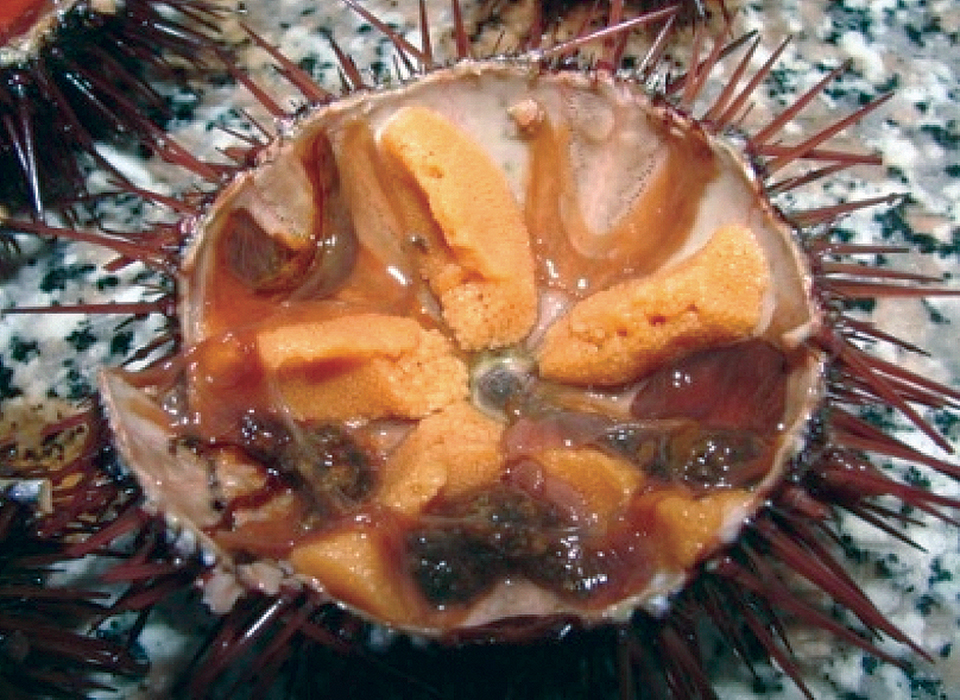
Health & Welfare
Aquaculture could enhance Mediterranean Sea urchin fishery
Although researchers in several countries are working to enhance sea urchin fisheries or commercial production, the development of a major commercial industry has been restrained by the lack of cost-effective production technology.
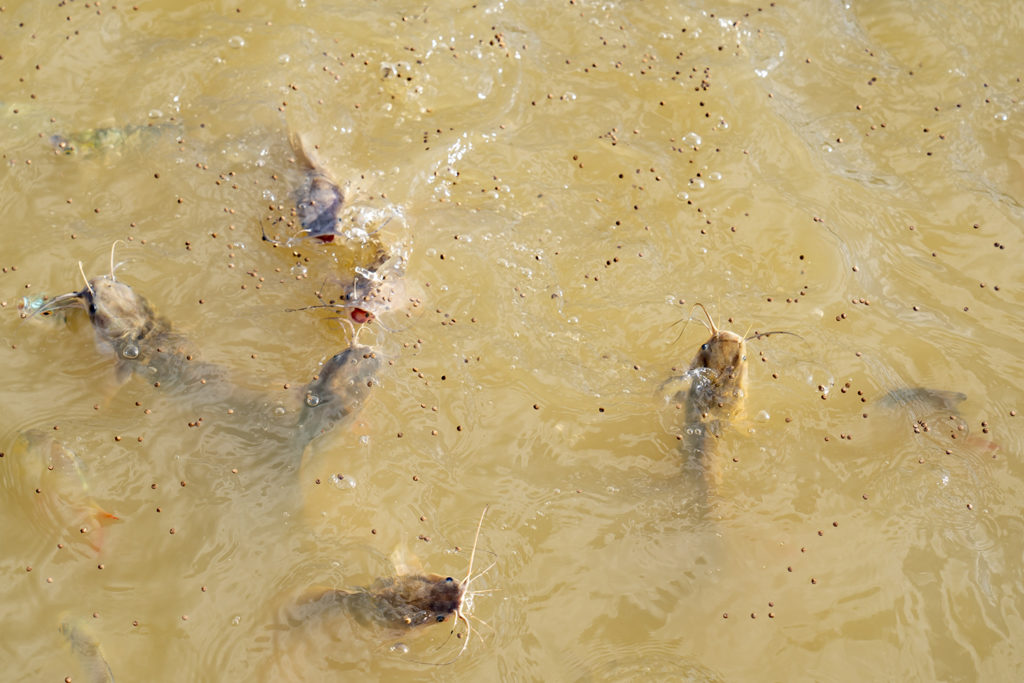
Aquafeeds
‘We will very likely find it’: Microplastics warning sounded for aquafeeds
The warning about microplastics pollution is finding its way to aquaculture, as a new study finds contaminated samples of fishmeal, a prominent aquafeeds ingredient.
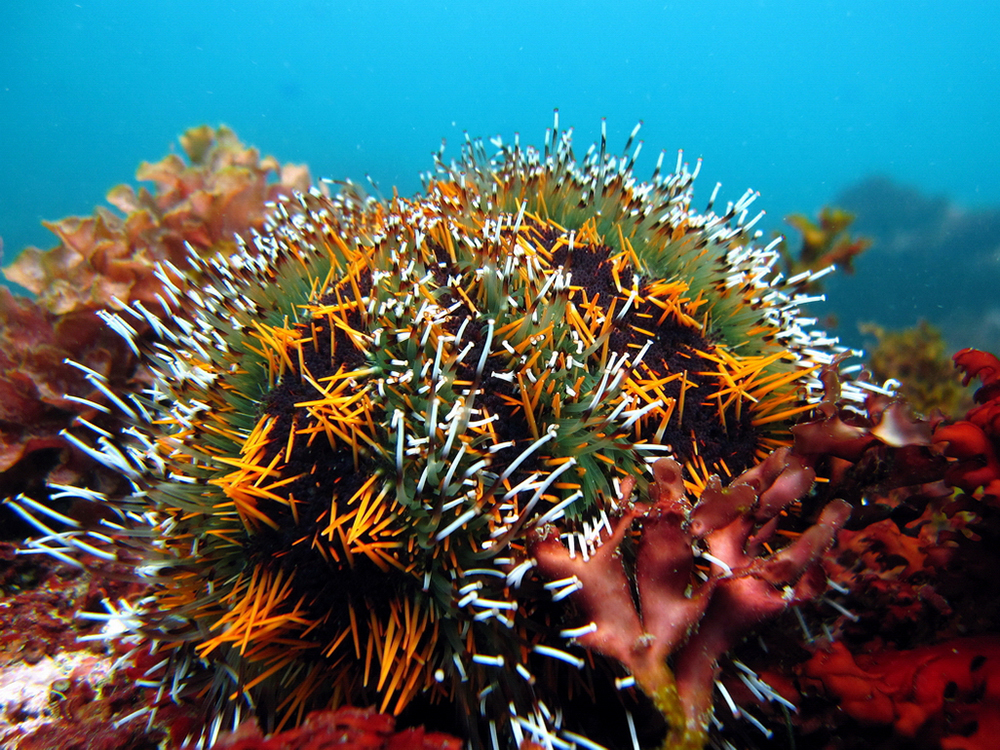
Aquafeeds
Evaluating seaweed, formulated diet on growth, gonad quality of sea urchins
An evaluation of the effects of fresh seaweed diets and manufactured feeds on growth and gonad quality of adult, wild collector sea urchins.
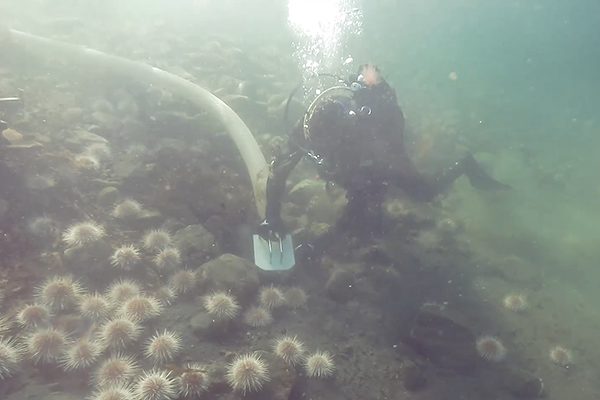
Intelligence
The seafood technology we didn’t know we needed: a sea urchin vacuum
An Indigenous business operating in Atlantic Canada is testing a sea urchin vacuum developed by C Robotics to improve harvesting efficiency.



